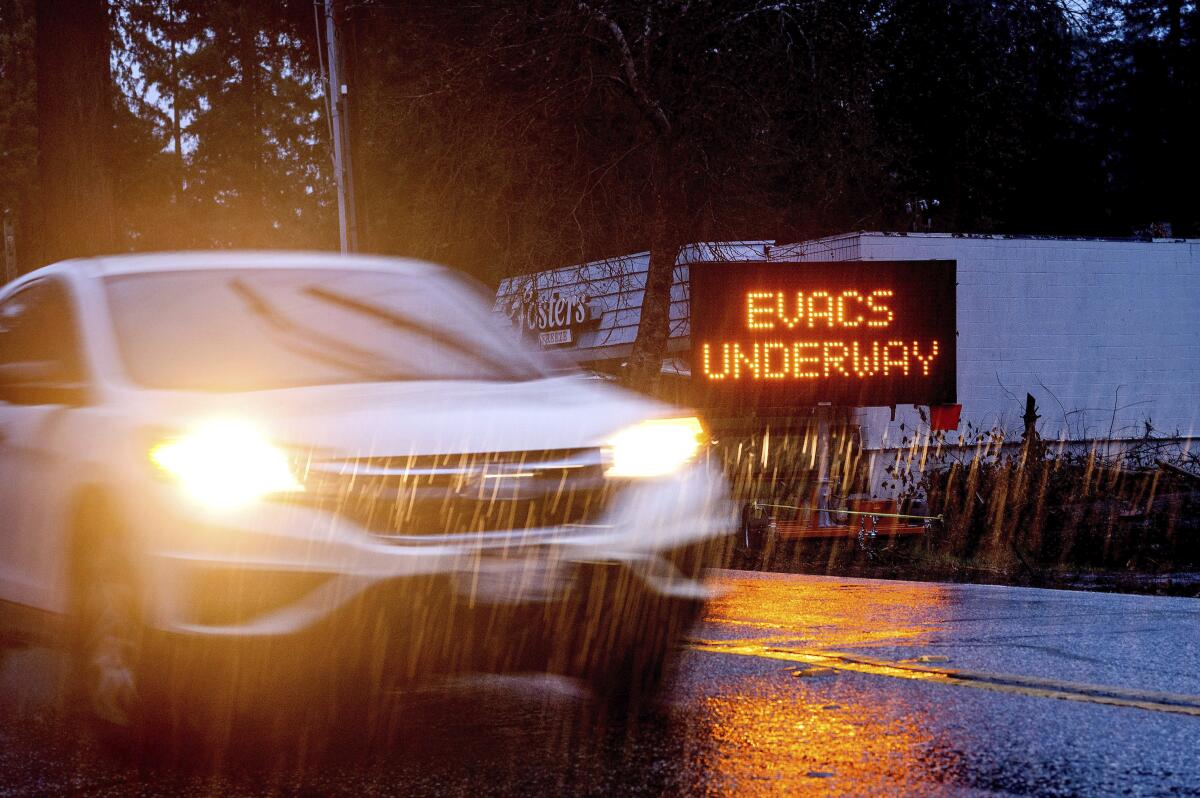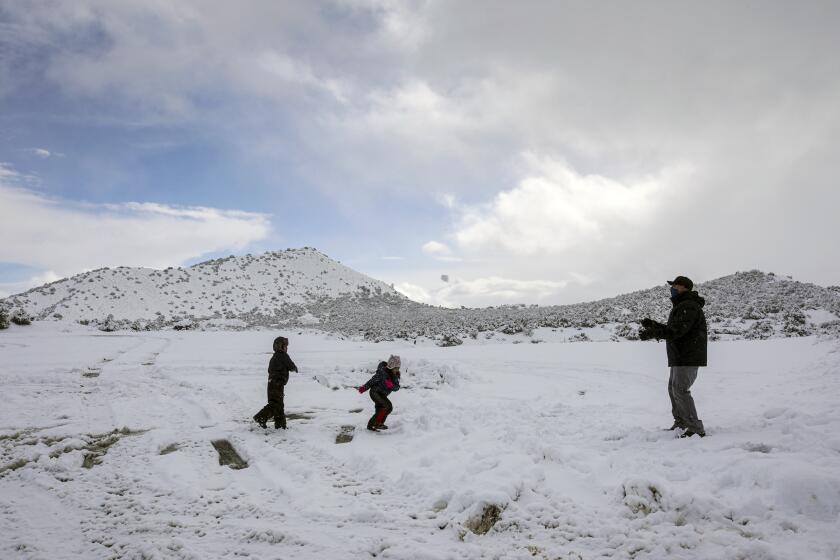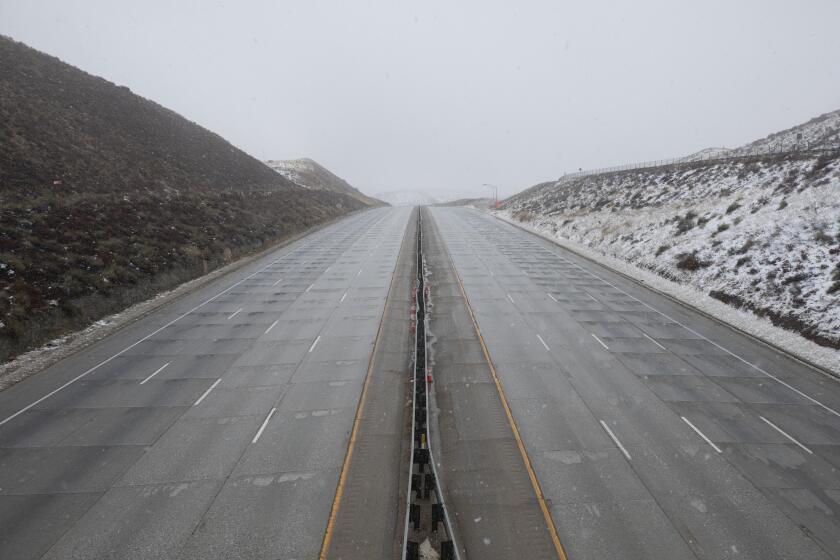California’s fire, rain and mudslide cycle: How to prepare and stay safe

- Share via
Atmospheric river storms in California are raising concerns about mudslides and debris flows in areas hit by recent fires.
Much of California’s Central Coast is under a flash flood watch through Thursday morning. Officials have warned of potential high winds, power outages and debris flows.
The state is notorious for a deadly cycle of fires followed by rain and mudslides. But slides can also occur days, weeks and even months after it stops raining.
Here are some key points from the pages of The Times and other sources. Also check out this infographic on how mudslides happen.
A winter storm swept over much of Southern California, dusting mountaintops with snow and bringing traffic to a standstill on several passes.
How mudslides happen
In a burned area, a wildfire can make the soils repellent to water, creating a floodlike flow on the ground that picks up rocks and debris.
In an area that has not burned, soil can become saturated. Pressure builds up underground and soil starts moving, picking up mud and debris as it flows downhill.
Water rushing down with only mud is called a mudflow. If the flow picks up rocks, branches and rocks or boulders, that’s called a debris flow. Mud and debris flows are types of shallow landslides, generally defined as less than 15 feet deep.
Another type of shallow landslide involves a saturated hillside that collapses but does not move very far, such as one that buries a roadway with dirt and rocks from a neighboring slope. They can happen up to an hour after a burst of intense rain.
In areas where the bedrock is very deep, rainwater can seep deep underground during multiple rainstorms. During a series of repeated heavy storms, water can accumulate and build up pressure. The pressure can destabilize an entire chunk of land, causing it to collapse downhill. Landslides can happen slowly, and they may show warning signs like cracking or subtle movements, allowing people time to escape. But they can also strike rapidly with no warning, even on a rainless day months after the end of winter.
The L.A. area remains dry for now, but a few showers may arrive late Wednesday and grow heavier Thursday into Friday
Tips to stay safe
Here are some basic tips to prepare for mudslides from the California Department of Conservation:
- Be ready for debris flows for two to five years after a wildfire. An intense rain (typically about ½ inch per hour — like a thunderstorm) on a recently burned slope can trigger a debris flow.
- Pay attention to official weather forecasts. Just a few minutes of intense rain can start a debris flow. The National Weather Service will issue a flash flood watch or warning for your area when rainfall is anticipated to be intense. Note that it’s the rain in the mountains that will start the debris flow, even if it’s not raining — or only sprinkling — where you live.
- Don’t rely on what you’ve seen in past debris flows. Debris flows can hit new areas or return to previous areas; they might be smaller — or larger — the next time. Whatever happened before, the next time could be different.
- Get out before the storm arrives. Debris flows move fast! If you wait to see if a debris flow is coming your way, it will be too late to leave safely. You cannot outrun a debris flow.
- If you must shelter in place, choose your spot in advance and stay alert. Find the highest point nearby (such as a second story room or the roof) and be ready to get there at a moment’s notice. Listen and watch for rushing water, mud, and unusual sounds. Survivors describe sounds of cracking, breaking, roaring, or a freight train in advance of a debris flow.
- Never underestimate a debris flow. Debris flows can start in places they’ve never been before. They can leave stream channels and plow through neighborhoods. When a debris flow is small, people can control it with walls, K-rails and sandbags. When a debris flow is big enough, nothing can stop it.
- Expect other flood dangers. Storms that can cause debris flows can also cause more common flooding dangers.
- Debris flows can also occur in the absence of fire during heavy winters. Be aware that the soil may be waterlogged and that more rain can trigger debris flows.
- Watch for new springs or seeps and excess surface erosion on slopes on and around your property. If there are nearby streams, do they appear muddier than normal?
- Avoid sleeping in lower-floor bedrooms on the sides of houses that face slopes. Debris flows can bury people sleeping in lower-floor bedrooms adjacent to hazardous slopes.
- Sign up for emergency alerts from your local emergency management agency. In Los Angeles County, that’s Alert L.A. County (lacounty.gov/emergency/alert-la).
More to Read
Sign up for Essential California
The most important California stories and recommendations in your inbox every morning.
You may occasionally receive promotional content from the Los Angeles Times.










